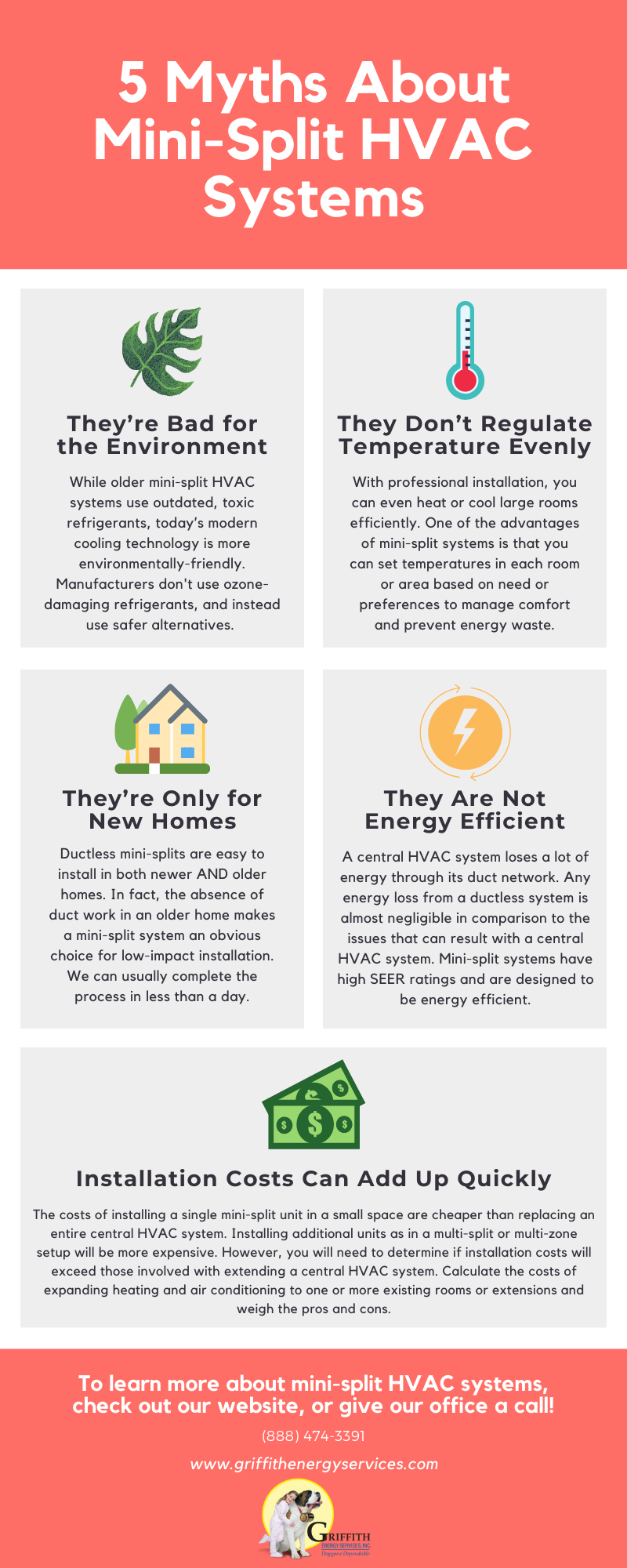When it comes to making the important decision of which HVAC system is right for you, you need all the facts. Unfortunately, there are many myths floating around about mini-split HVAC systems. You may need to replace an older central HVAC system that is malfunctioning. Maybe you’re in the process of deciding to upgrade to a newer system, and you want to consider all the available alternatives.
Upgrading the HVAC unit in your Berlin, Maryland, home is a big decision. You will need to understand the advantages and disadvantages of each type of system. To help you make an educated choice, we will debunk a few myths about mini-split HVAC systems.
They’re Bad for the Environment
While older mini-split HVAC systems use outdated, toxic refrigerants, today’s modern cooling technology is more environmentally friendly. Manufacturers have stopped using ozone-damaging refrigerants in favor of newer and safer alternatives. Additionally, the filters inside the mini-split unit trap dust and allergens to help purify the air in your home. Just remember to regularly replace the filters in your ductless unit for maximum efficiency and air quality.
They Don’t Regulate Temperature Evenly
With professional installation, you can even heat or cool large rooms efficiently. One of the advantages of mini-split systems is that you have more control over the temperature in rooms with these units. A ductless AC has a clear advantage in regulating temperatures. You can set temperatures in each room or area based on need or preferences to manage comfort and prevent energy waste.
They’re Only for New Homes
Another advantage of mini-split HVAC systems is the ease of installation—whether in new or older homes. In fact, the absence of ductwork in an older home makes a mini-split system an obvious choice for low-impact installation. Installing a central heating and air conditioning system and retrofitting a duct network in an old house is a major construction project which takes weeks and can be disruptive to your comfort and schedule. Comparatively, we can complete the installation of a ductless system in one day. The process only requires mounting of the indoor component and connecting it to the outdoor unit via a narrow tube.
They Are Not Energy Efficient
A central HVAC system loses a lot of energy through its duct network. While there is no ductwork for a mini-split system, some might think having a unit serving just one area will lead to energy waste. Any energy loss from a ductless system is almost negligible in comparison to the issues that can result with a central HVAC system. Mini-split systems have high SEER (Seasonal Energy Efficiency Ratings) and are designed to be energy efficient.
Installation Costs Can Add Up Quickly
The costs of installing a single mini-split unit in a small space are cheaper than replacing an entire central HVAC system. Installing additional units as in a multi-split or multi-zone setup will be more expensive. However, you will need to determine if installation costs will exceed those involved with extending a central HVAC system. Calculate the costs of expanding heating and air conditioning to one or more existing rooms or extensions. You will have to consider the costs and construction impact in relation to installing an entirely new ductwork system in an older home.
Now that you are armed with the facts about mini-split HVAC systems, you are well on your way to making an informed decision about which HVAC system is right for you and your home. We offer free ductless system consultations to help you with your final decision. Contact Griffith Energy Services, Inc. today at 888-474-3391 for more information about ductless HVAC systems for your Berlin, MD home. We are happy to help address any questions or concerns you have about ductless air conditioners.
Image provided by Shutterstock




